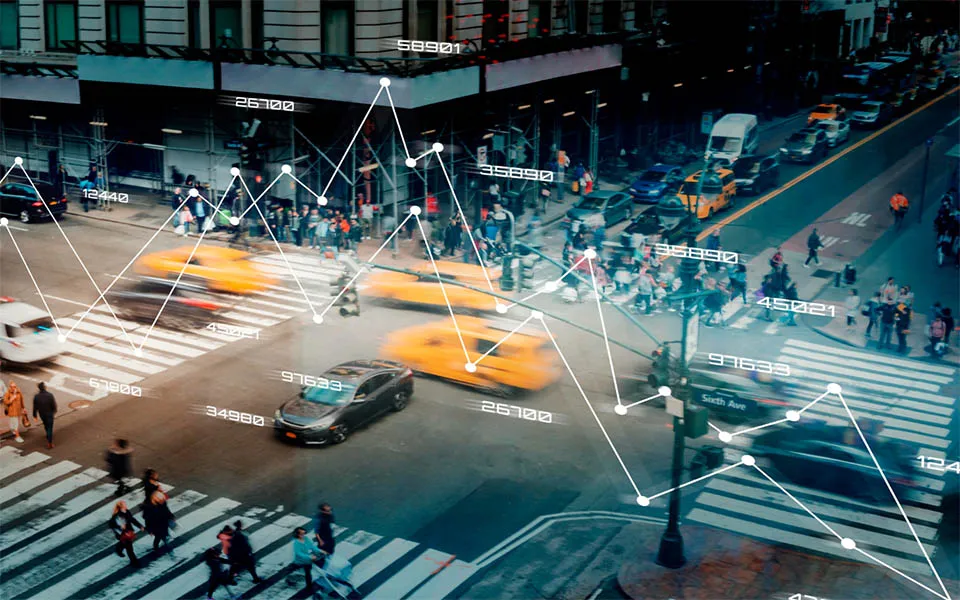The Emergence of 5G Indoor Security Cameras: Enhancing Surveillance Efficacy
In the domain of security and surveillance, the advent of 5G technology has inaugurated a new era of high-speed, reliable, and advanced monitoring solutions. 5G indoor security cameras represent a pivotal innovation in this field, offering enhanced capabilities and performance that redefine the standards of safety within indoor environments. This article will explore the advantages, features, and critical aspects of 5G indoor security cameras, providing a comprehensive understanding of their significance in modern security setups.

I. The Integration of 5G in Indoor Security Systems
The incorporation of 5G technology into indoor security cameras is a transformative development that brings forth several improvements over prior generations. With 5G’s high data transmission speeds and lower latency, 5G indoor security cameras can transmit high-resolution video with greater efficiency and less delay, making them exceptionally proficient for real-time monitoring and response.
Enhanced Data Transmission Rates
5G technology enables the camera to handle higher data loads, allowing for streaming and recording in Ultra-High Definition (UHD) without buffering or loss of quality.
Reduced Latency for Real-Time Monitoring
Low latency is crucial for security systems, especially when immediate reaction is required. 5G indoor security cameras can swiftly relay footage to monitoring centers or personal devices, facilitating faster decision-making in urgent situations.
Reliability in Connectivity
With more stable connections, 5G indoor security cameras are less likely to experience downtime or interference, ensuring that surveillance remains uninterrupted.
II. Advantages of Using 5G Indoor Security Cameras
Adopting 5G indoor security cameras comes with a multitude of benefits that enhance the surveillance capabilities of residential and commercial properties alike.
Superior Video Quality
The bandwidth capabilities of 5G allow for higher resolution video storage and streaming, which is critical for capturing clear images that can be used for identification purposes and forensic analysis.
Future-Proofing Surveillance Infrastructure
As the demand for higher data rate applications grows, 5G-ready cameras ensure that security systems do not become obsolete, safeguarding long-term investments.
Scalability and Flexibility
The 5G infrastructure supports a larger number of devices within a network, allowing for more cameras to be added without significant degradation in performance, thus offering scalability for expanding surveillance needs.
III. Considerations for Implementing 5G Indoor Security Cameras
While the benefits of 5G indoor security cameras are substantial, there are important considerations to account for when integrating these devices into existing security frameworks.
Infrastructure Requirements
The full potential of 5G cameras can only be realized with the presence of a robust 5G network infrastructure, which may necessitate upgrades or adjustments to current setups.
Cost Implications
The initial investment in 5G-capable cameras and supporting infrastructure could be higher than traditional systems. Cost-benefit analyses should be conducted to ensure the return on investment justifies the upgrade.
Compatibility and Integration
Ensuring that 5G indoor security cameras are compatible with existing security systems and IoT devices is essential for seamless operation and functionality.
IV. The Future of Indoor Security with 5G Technology
The trajectory of 5G technology suggests a future where indoor security systems are not just reactive but also proactive, using advanced analytics and artificial intelligence (AI) to predict and prevent security breaches before they occur.
AI and Machine Learning Integration
The processing power of 5G networks enables the use of AI algorithms for facial recognition, abnormal behavior detection, and other sophisticated surveillance functions.
IoT and Smart Home Integration
5G indoor security cameras will be integral to the smart home ecosystem, offering more interactive and automated control over home security.
Conclusion
5G indoor security cameras represent a monumental leap forward in surveillance technology, offering unmatched video quality, speed, and reliability. By considering the advantages and implementation considerations, users can effectively leverage the power of 5G to secure their indoor environments more effectively than ever before.
FAQs Section:
Q1: What makes 5G indoor security cameras better than traditional security cameras?
A1: 5G indoor security cameras provide higher data transmission speeds, lower latency, and more reliable connections, enabling UHD video streaming, real-time monitoring, and advanced analytics capabilities.
Q2: Are 5G indoor security cameras compatible with existing security systems?
A2: Compatibility depends on the specific models and systems in place. Many 5G cameras are designed to be backward-compatible, but checking with the manufacturer and conducting an integration assessment is recommended.
Q3: Will I need to upgrade my entire security system to use 5G indoor security cameras?
A3: It may not be necessary to upgrade the entire system, but ensuring a 5G-compatible infrastructure is crucial for these cameras to function optimally. This could involve upgrading network equipment to support the 5G bandwidth.
Q4: How does the cost of implementing 5G indoor security cameras compare to traditional systems?
A4: The initial investment in 5G indoor security cameras and infrastructure is generally higher due to the advanced technology involved. However, the long-term benefits and future-proofing aspects may offset the initial costs over time.








